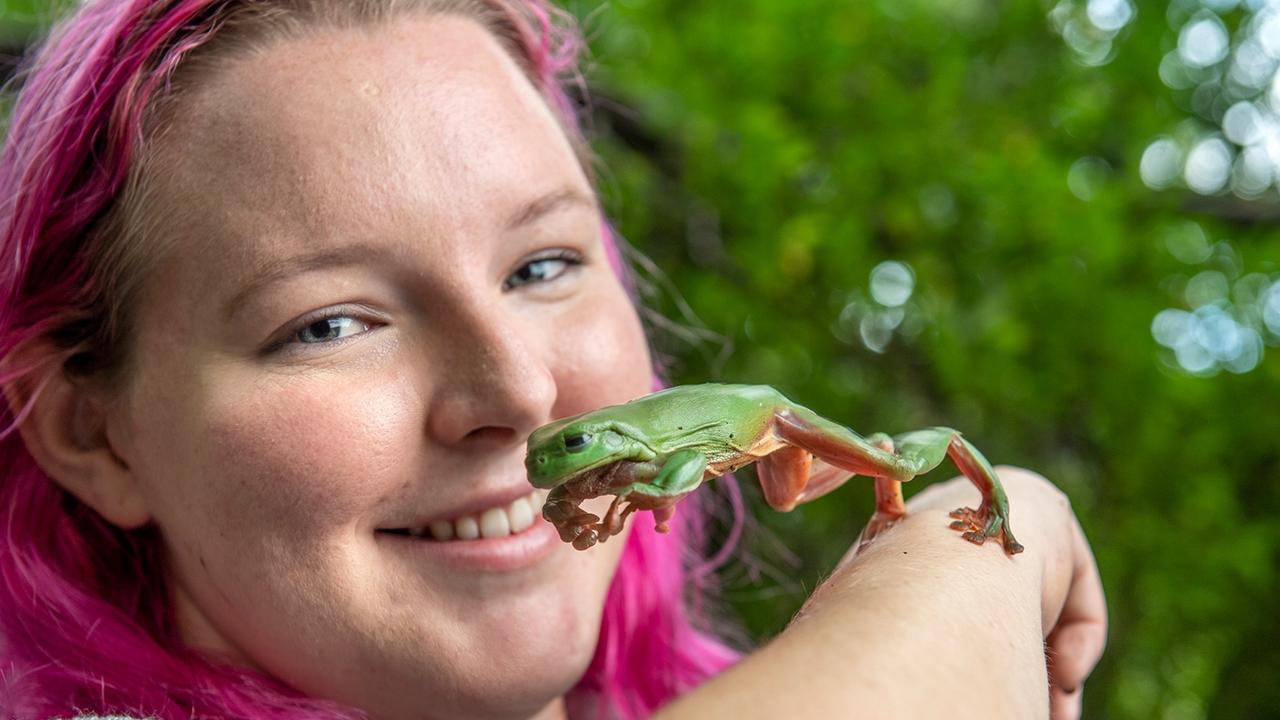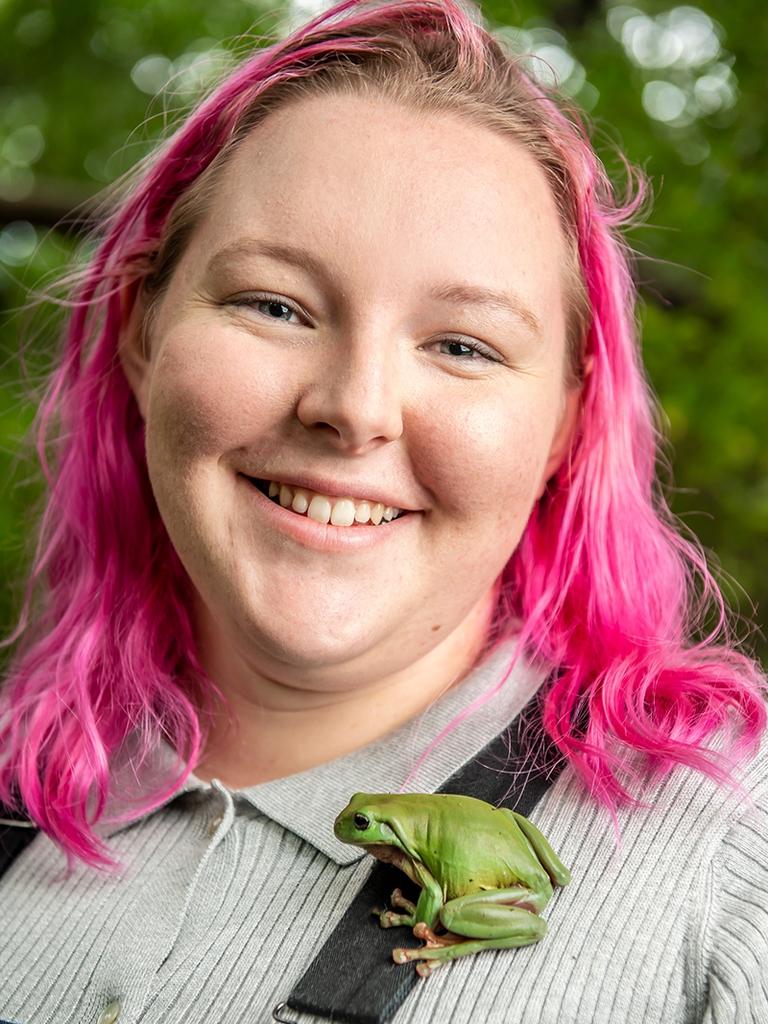USQ student jumps into Australian first amphibian research project
Meet the USQ science student who has just leapt into Australia’s very first amphibian trials of its kind.

Toowoomba
Don't miss out on the headlines from Toowoomba. Followed categories will be added to My News.
Amphibian research at the University of Southern Queensland is progressing in leaps and bounds, thanks in part to a study by science honours student Mickayla Heinemann.
In an Australian first, Ms Heinemann is trialling PVC and bamboo pipes as a technique for collecting frogs, connecting the pipes up into trees in different habitats.
“Traditional methods don’t actually survey many tree frog species, so finding new ways to study these frogs is really important,” Ms Heinemann said.
“As many people probably know, a lot of tree frog species like to hang out in drainpipes around our homes, using them to enhance their vocalisations during the breeding season.
“The tree pipe method helps to offer a new refuge area for the frogs, which will enhance their vocalisations while allowing us to survey them.”
Ms Heinemann made the jump into amphibian research after growing up in North Queensland.
“There are a lot of green tree frogs up there with the weather,” she said.
“From a young age I have always been around them, I saw them in the backyards, the drainpipes and the toilets – I was always amazed at the weird places they could live.”

As part of her honours project, Ms Heinemann is also looking at ways to improve traditional survey methods.
“I’m investigating the use of light as a way to enhance pitfall trapping,” she said.
“Using artificial light above a pitfall trap, which is essentially a little hole in the ground, we attract insects and, as the frogs walk along trying to get to their little snack, they fall into the hole.
“We need to improve our survey methods so we can get better data on the frogs in our ecosystems – a lot of the traditional methods severely underestimate which frogs we have and sometimes miss out whole species, such as tree frogs.
“If we don’t know about them, how can we conserve them? We need to fill in the gaps in our knowledge.”
University of Southern Queensland Wildlife Management Associate Professor Peter Murray is the principal supervisor of the project.
“Frogs are a really important part of the environment and they are often neglected because people don’t like them or are unaware of them,” Associate Professor Murray said.
“The traditional methods for surveying frogs include going out at night with a torch, recording vocalisations and putting a pipe in the ground and waiting for frogs to fall into it.
“Very pleasingly the tree pipe trap method has been a success.
“Mickayla’s project started after the rain in January and we caught less cane toads and a broader diversity of species than expected.”








